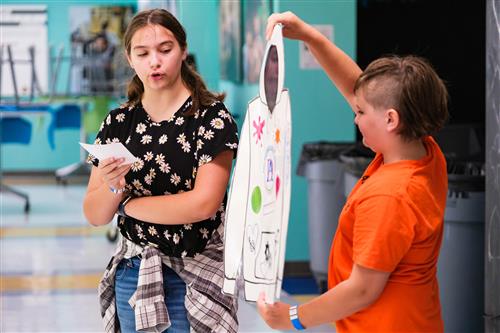Where Creativity Meets Core Subjects at EM3
-

Introduction to Design Thinking
Design Thinking is a problem-solving approach that emphasizes understanding the user, challenging assumptions, redefining problems, and creating innovative solutions. At East Millbrook Academy of Arts and Design, we integrate this method into our core content classrooms to enhance learning and foster creativity.
The Five Phases of Design Thinking
1. Empathize: Understand the needs and experiences of students.
2. Define: Clearly articulate the problem to be solved.
3. Ideate: Brainstorm a wide range of ideas and potential solutions.
4. Prototype: Create tangible representations of ideas.
5. Test: Experiment with prototypes to gather feedback and refine solutions.How We Blend Design Thinking with the Arts
At East Millbrook, we believe students learn best when they’re encouraged to think creatively and solve problems in hands-on ways. By combining the arts with design thinking, we give students the tools to imagine, create, and reflect—all while building a deeper understanding of core subjects. Here’s how it comes together in our classrooms:
At East Millbrook, learning goes beyond the textbook. Our students dive into core subjects by creating, designing, and thinking like artists and innovators.
-
Social Studies: While studying ancient civilizations, students design their own artifacts using clay or digital tools, then curate a classroom “museum exhibit” to share stories and historical insights with others.
-
English Language Arts: After reading a novel, students write and perform a scene from a character’s point of view, or design a set for a play that captures the theme and setting of the story—combining literary analysis with theatrical design.
-
Math: Students might explore geometry by designing a stage set using scale models, measuring angles and shapes while solving real-world problems. Math becomes meaningful when students see how it helps bring a creative vision to life.
-
Science: When learning about ecosystems, students design and build a sustainable habitat model using recycled materials. They use Design Thinking to brainstorm, prototype, and test ideas—just like real scientists and engineers.
At EM3, students don’t just absorb facts—they create, perform, and solve real-world problems in ways that make learning exciting and unforgettable.
-


